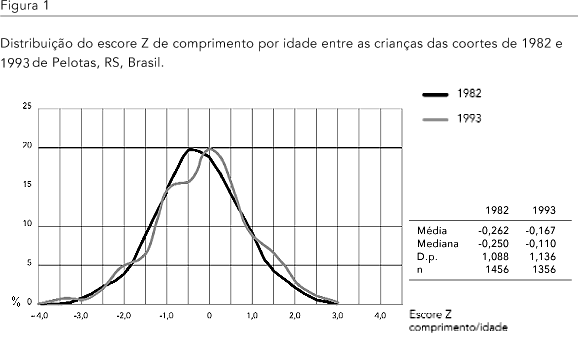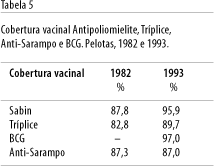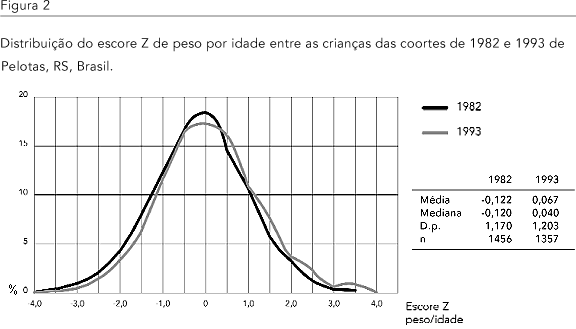Prevalence of anthropometric deficits and of obesity were studied in two population-based birth cohort studies in the city of Pelotas in Southern Brazil, in 1982 and 1993. All hospital delivered babies in each one-year period were identified, and samples of approximately 20% were visited at home at around 12 months of age, totalling 1,449 children submitted to anthropometric examination in 1982 and 1,359 in 1993. Losses and refusals accounted for 20% of the children in 1982 and 7% in 1993. In this 11-year period, prevalence of weight/age deficits (below -2 standard deviations of the NCHS reference) fell from 5.4% to 3.8%, while that of weight/height dropped from 1.3% to 0.8%. Height/age deficits increased slightly, from 5.3% to 6.1%, while the proportion of obese children increased from 4.0% to 6.7%. The increase in weight at 12 months was due to a more rapid weight gain in the first year, since birthweights remained unchanged. About 10% of the children from the lowest income group had weight/age or height/age deficits, compared to 3% or less of those with a high family income. On the other hand, obesity showed a direct association with income, except for the wealthiest group, where the prevalence dropped, possibly due to concern among these families about the consequences of infant obesity.
Child Nutrition Disorders; Obesity; Anthropometry; Birth Weight; Sex










